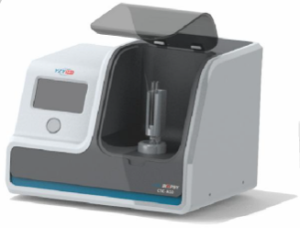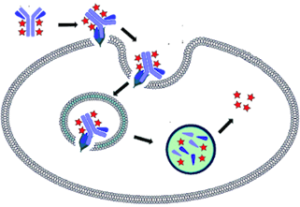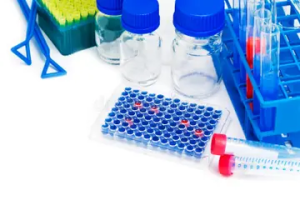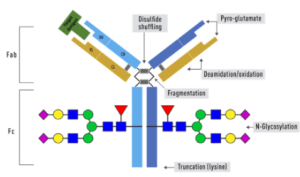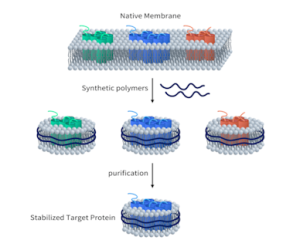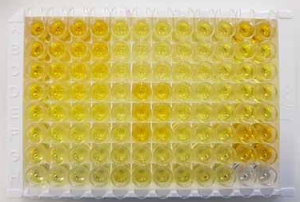| 目录: 11143 |
| 产品名称: Human CD40 Protein |
| 规格: 10 µg, 50 µg and 100 µg |
| 基因符号: CD40;Bp50;CDW40;MGC9013;TNFRSF5;p50 |
| Target: CD40 |
| UNIPROT ID: P25942 |
| 描述: Recombinant human CD40 protein with C-terminal mouse Fc and 6xHis tag |
| 背景: This gene is a member of the TNF-receptor superfamily. The encoded protein is a receptor on antigen-presenting cells of the immune system and is essential for mediating a broad variety of immune and inflammatory responses including T cell-dependent immunoglobulin class switching, memory B cell development, and germinal center formation. AT-hook transcription factor AKNA is reported to coordinately regulate the expression of this receptor and its ligand, which may be important for homotypic cell interactions. Adaptor protein TNFR2 interacts with this receptor and serves as a mediator of the signal transduction. The interaction of this receptor and its ligand is found to be necessary for amyloid-beta-induced microglial activation, and thus is thought to be an early event in Alzheimer disease pathogenesis. Mutations affecting this gene are the cause of autosomal recessive hyper-IgM immunodeficiency type 3 (HIGM3). Multiple alternatively spliced transcript variants of this gene encoding distinct isoforms have been reported. |
| Species/Host: HEK293 |
| Molecular Weight: The protein has a predicted molecular mass of 68 kDa after removal of the signal peptide. |
| Molecular Characterization: CD40(Glu21-Arg193) mFc(Pro99-Lys330) 6×His |
| 纯化:: The purity of the protein is greater than 95% as determined by SDS-PAGE and Coomassie blue staining. |
| Formulation & Reconstitution: Lyophilized from nanodisc solubilization buffer (20 mM Tris-HCl, 150 mM NaCl, pH 8.0). Normally 5% – 8% trehalose is added as protectants before lyophilization. |
| 储存和运输: Store at -20°C to -80°C for 12 months in lyophilized form. After reconstitution, if not intended for use within a month, aliquot and store at -80°C (Avoid repeated freezing and thawing). Lyophilized proteins are shipped at ambient temperature. |
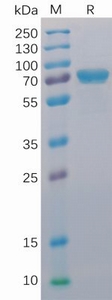
Figure 1. Human CD40 Protein, mFc-His Tag on SDS-PAGE under reducing condition. | 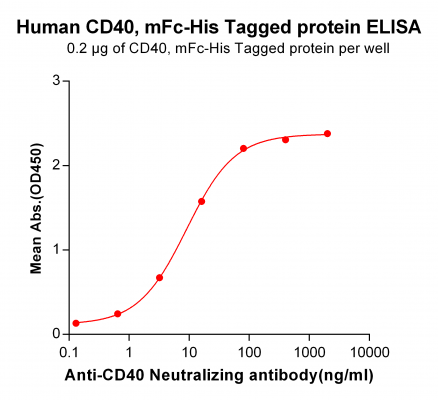
Figure 2. ELISA plate pre-coated by 2 µg/ml (100 µl/well) Human CD40, mFc-His tagged protein (11143) can bind CD40 Neutralizing antibody 28029 in a linear range of 0.64-80.0 ng/ml. | 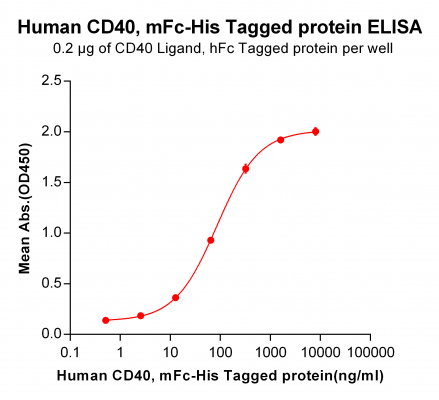
Figure 3. ELISA plate pre-coated by 2 µg/ml (100 µl/well) Human CD40 Ligand,hFc tagged protein 11241 can bind Human CD40, mFc-His tagged protein (11143) in a linear range of 0.51-320 ng/ml. | |
|








